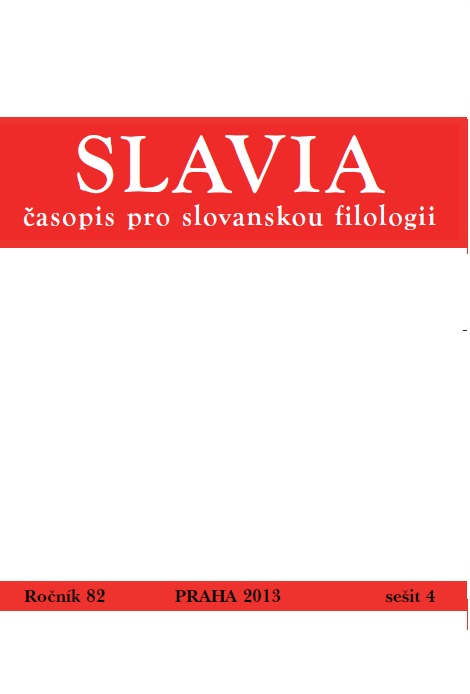The Competing Use of Perfect and Aorist Tenses in Old Church Slavonic
The Competing Use of Perfect and Aorist Tenses in Old Church Slavonic
Author(s): Catherine Mary MacRobertSubject(s): Theoretical Linguistics
Published by: AV ČR - Akademie věd České republiky - Slovanský ústav and Euroslavica
Keywords: Old Church Slavonic translation technique; aorist tense; perfect tense; imperative; Euchologium Sinaiticum; Psalterium Sinaiticum
Summary/Abstract: In Old Church Slavonic the distribution of aorist and perfect tenses is problematic: it appears for the most part to be semantically motivated, but the distinction in meaning does not correspond exactly to what is found in modern Slavonic languages and therefore has to be inferred from Old Church Slavonic material. It has sometimes been suggested that in the second and third persons singular, which coincide formally in the aorist tense, variation between aorist and perfect forms may to some extent be correlated with explicitly marked distinctions of person in Greek, and may therefore be a side effect of translation; but such correlations are not regular, and the frequency of second person singular perfect forms is higher in some types of text than in others. This analysis attempts to elucidate the reasons for these patterns by considering, in addition to the semantic account of the perfect tense put forward by Bunina and Dejanova, several other factors: context, discourse type and verbal morphology. It starts with an examination of second person singular aorist and perfect forms in the Euchologium Sinaiticum. These are found almost without exception to be semantically motivated, as the formulaic structure of the texts usually precludes ambiguity. Investigation of usage in the Old Church Slavonic psalter translation is complicated both by variant readings in the Psalterium Sinaiticum and other early manuscripts and by the less predictable linguistic organization of the psalms. Although a semantic account can explain the choice of perfect or aorist in many places, it seems not to be fully adequate in a number of instances where second person perfect and aorist forms are used in close juxtaposition and similar context. Moreover, the incidence of these forms differs markedly between verbs in -iti, where second and third person aorist forms coincide in writing with the imperative and the perfect tense is frequent, and verbs of other conjugations, whose aorist forms are distinct from the imperative and occur freely. It is concluded a) that avoidance of ambiguity between aorist and imperative, in a text where these verbal forms cooccur unpredictably, was a supplementary motivation for the use of the perfect tense, b) that the perfect forms of verbs which were not subject to this ambiguity offer more reliable evidence for the semantically based use of this tense than the numerous verbs in -iti, and c) that the translator’s choices of tense depended on his understanding of the meaning, not on a concern to reproduce the formal distinctions of Greek.
Journal: Slavia - časopis pro slovanskou filologii
- Issue Year: LXXXII/2013
- Issue No: 4
- Page Range: 387-407
- Page Count: 21
- Language: English

